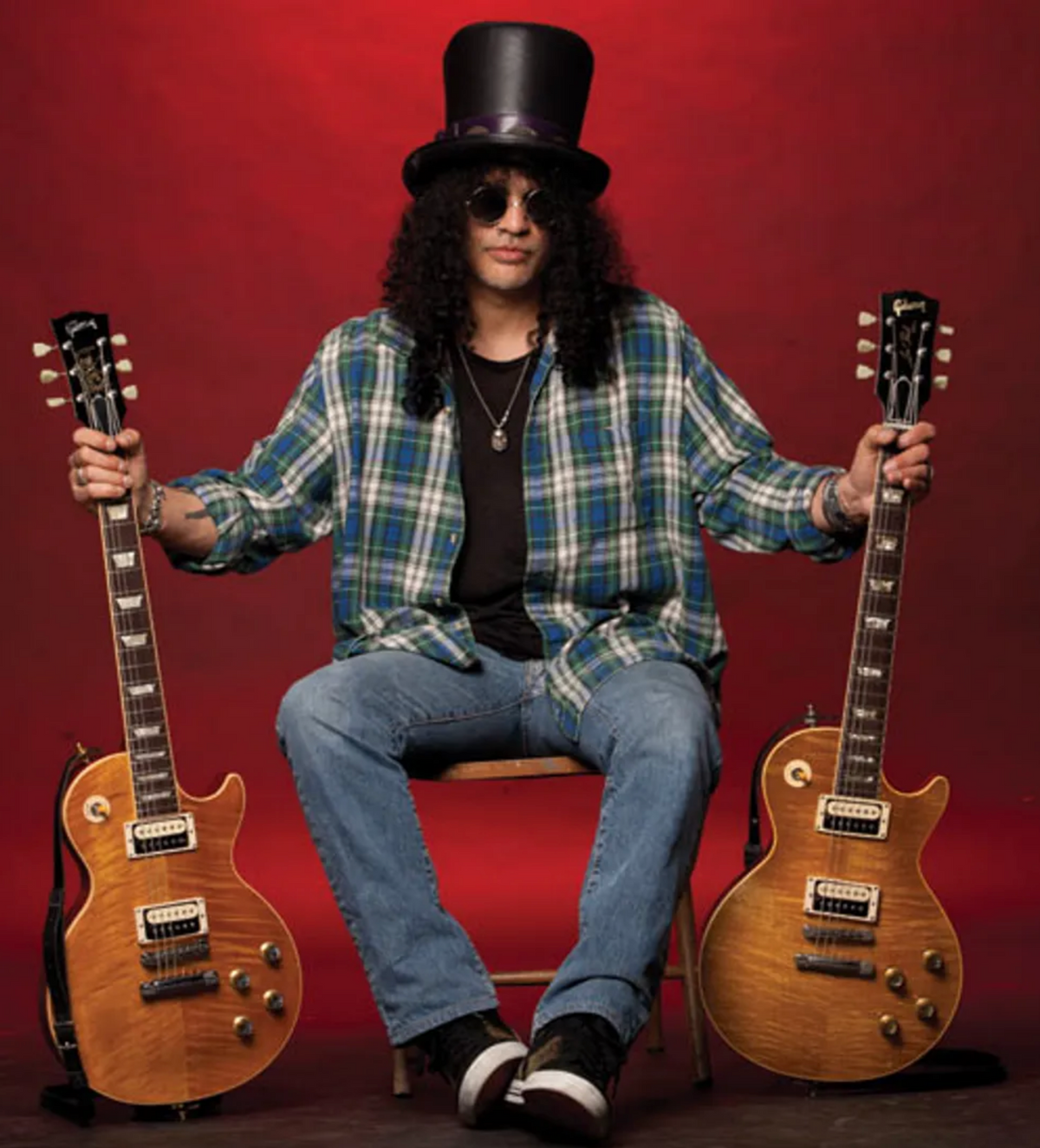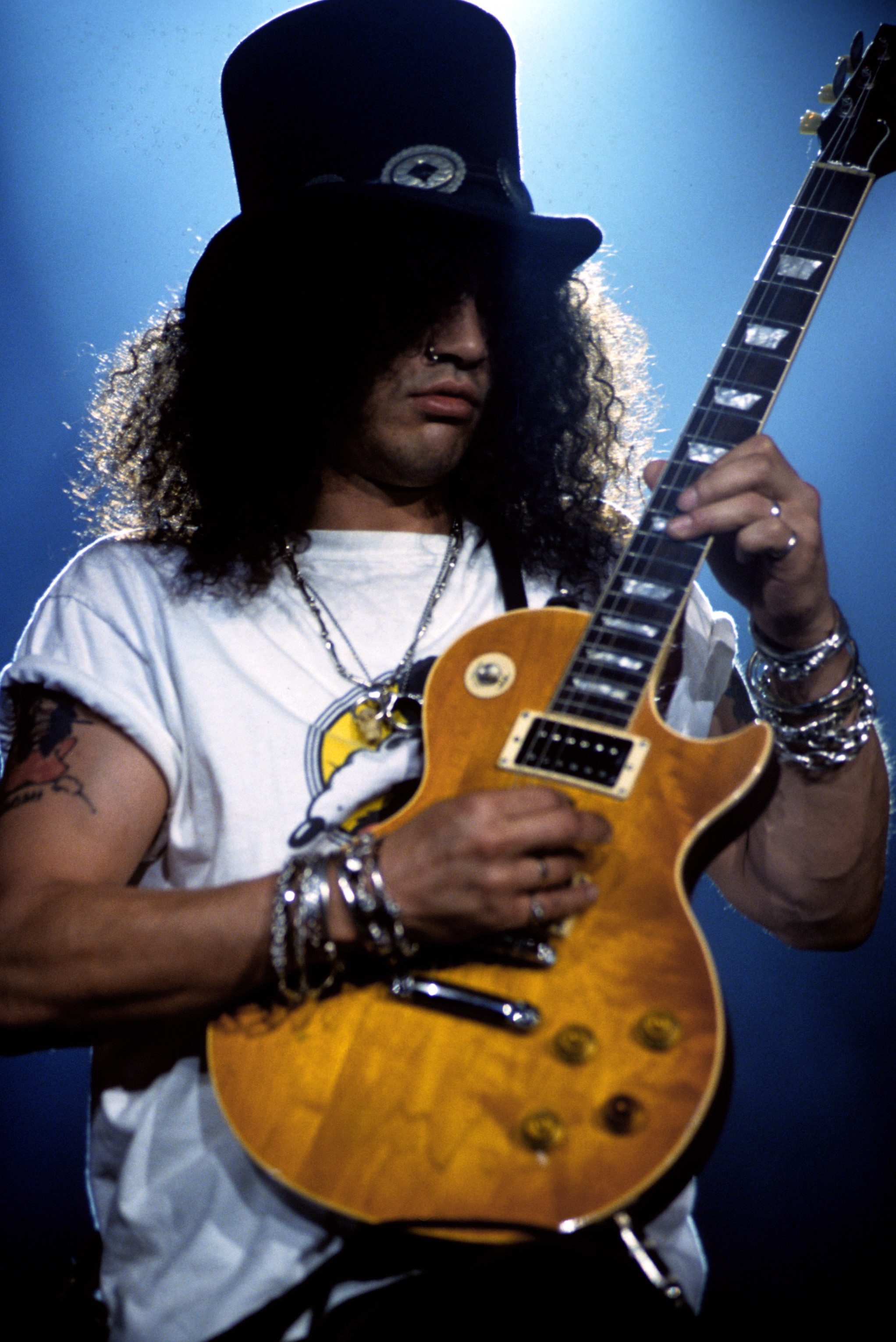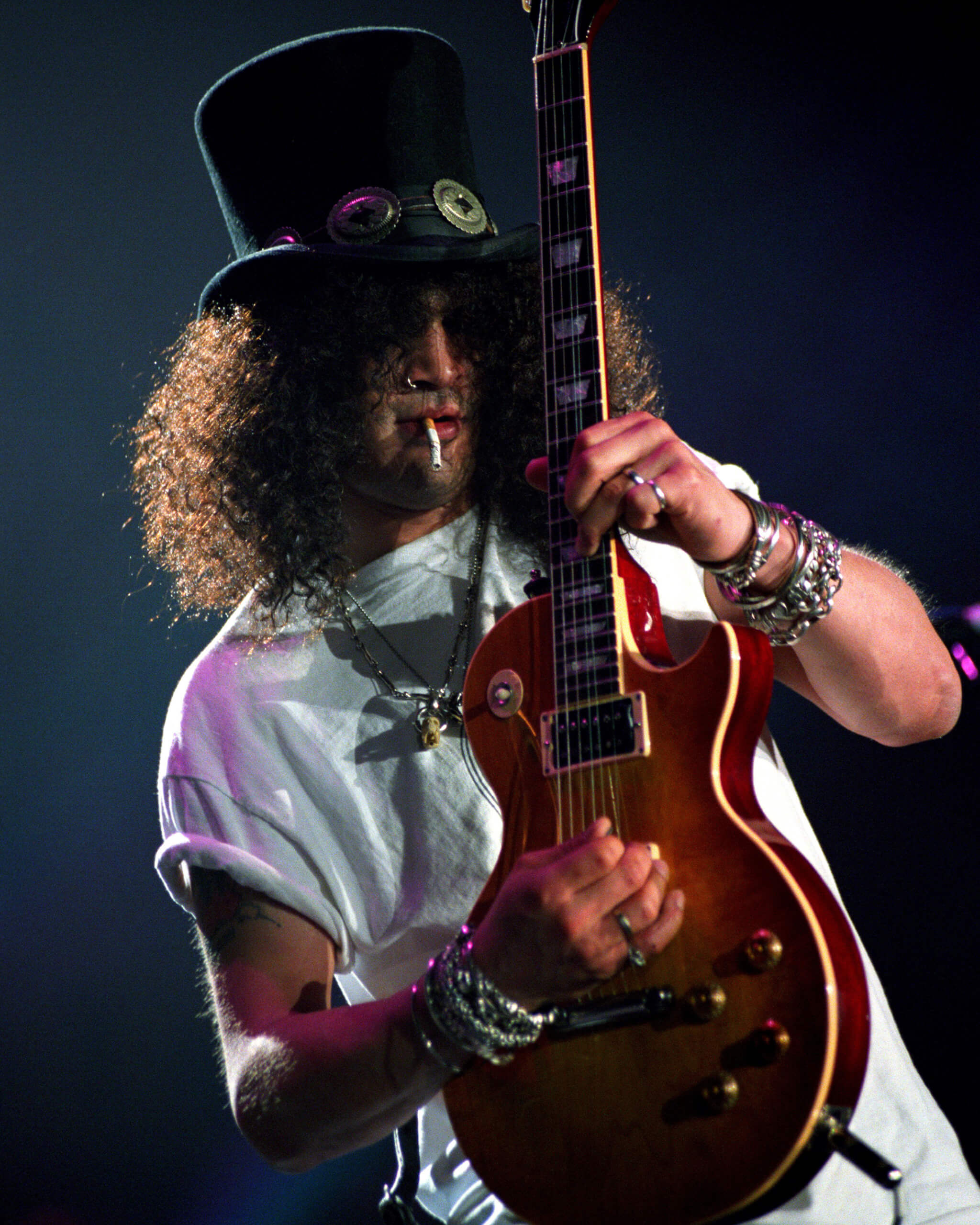Slash Guitar - The Man, The Mark, The Music
When you hear "Slash," your mind, it just might go straight to the iconic sound of a guitar, doesn't it? It's that kind of unique, powerful playing that really makes a mark, and for many, that sound is truly something special. This particular musician, you know, the one with the famous hat and the incredible guitar work, has certainly left his own lasting impression on the music world, making his name almost a synonym for a certain style of rock guitar. He brings a kind of raw energy to his performances, which is actually quite captivating to witness.
There's a lot more to the name "Slash" than just the person, though, you see. It's almost as if the word itself has taken on a life of its own, serving a variety of purposes in our daily conversations and even in how we write things down. We often use it without even thinking, for instance, when we're trying to indicate choices or perhaps separate different pieces of information. So, while we might typically think of the person first, that little slanted line, it also plays a rather significant role in how we communicate, which is something pretty interesting to consider.
This discussion, you know, will take a closer look at the person who truly embodies the "slash guitar" sound, exploring some bits about his life and musical path. But, in a way, we'll also touch upon the actual symbol itself, that forward-leaning mark we call a slash, and how it shows up in various places, even in how we might talk about or look up things related to music online. It's kind of neat how one word can have so many different meanings, isn't it?
- Dont Stop The Music Rihanna Lyrics
- Rylee Arnold Net Worth
- Iconic Barbie Outfits
- Is Lukas Nelson Married
- Vampire Eric
Table of Contents
- The Musician Behind the "Slash Guitar" Sound
- Personal Details - The Person Who Plays "Slash Guitar"
- What Does the Slash Symbol Mean for Your "Slash Guitar" Content?
- How Do You Type the Slash for Your "Slash Guitar" Notes?
- When Should You Avoid the Slash in "Slash Guitar" Discussions?
- Understanding the Difference - Backslash Versus Forward Slash for "Slash Guitar" Writers
- How Google Tools Connect with Your "Slash Guitar" Experience?
- Making Google Docs Accessible for "Slash Guitar" Fans
- Checking for Google Service Issues Related to "Slash Guitar" Searches
The Musician Behind the "Slash Guitar" Sound
So, when we talk about the "slash guitar" sound, we're really talking about a particular individual, a musician whose actual birth name is Saul Hudson. He was born on July 23, 1965, which, you know, makes him a bit of a seasoned player in the music scene. This gentleman, he holds both British and American citizenship, which is kind of interesting when you think about it, giving him roots in two different places. He's probably most widely recognized, though, for his work as the main guitar player for a very famous hard rock group, Guns N' Roses. His contributions to that band, they're pretty much legendary, helping to shape their distinctive sound. He's been with them through thick and thin, creating some truly memorable guitar parts that, in a way, have become synonymous with the band's identity. He’s the kind of player whose style, you know, is immediately recognizable, which is a pretty cool thing for any artist to achieve.
His professional identity, "Slash," it's more than just a stage name; it's practically a brand, representing a very particular kind of rock guitar playing. People often refer to him simply by this single word, and everyone just seems to know who they're talking about, which is a testament to his influence. He's got a way of making the guitar sing, or really, scream, in a manner that's quite unique. It's almost as if the instrument becomes an extension of his own voice, expressing feelings and moods that words alone simply could not capture. His performances, they often feature these long, expressive solos that really draw you in, making you feel every single note. He has a knack for creating melodies that stick with you, long after the song has finished playing, you know? It's a real skill, that.
Personal Details - The Person Who Plays "Slash Guitar"
Here are a few quick bits about the musician who brings the "slash guitar" to life:
- %D1%81%D0%BE%D1%84%D0%B8 %D1%82%D1%91%D1%80%D0%BD%D0%B5%D1%80
- Julie Brady
- Blue Ivy
- Rihanna Stop The Music Lyrics
- Pat Benatars Daughter
| Full Name | Saul Hudson |
| Professional Name | Slash |
| Date of Birth | July 23, 1965 |
| Nationality | British and American |
| Known For | Lead guitarist of Guns N' Roses |
What Does the Slash Symbol Mean for Your "Slash Guitar" Content?
Now, shifting gears a bit, let's talk about the actual slash symbol itself, that forward-leaning line (/). It's a very common mark, you know, and it pops up in a lot of different places, serving various purposes. For instance, it's often used when you're trying to show division between numbers, like when you're doing a simple math problem. Or, you might see it used to separate elements within dates, like when you write out the day, month, and year. It also, quite often, acts as a way to represent the word "or," giving you options without having to spell out the whole word. So, it's pretty versatile, in a way, appearing in all sorts of contexts, from formal documents to casual notes. It's a small mark, but it does a lot of work, that's for sure, helping to organize information and clarify meaning in a concise manner.
This symbol, sometimes people just call it a "slash," but it actually has a few other names too, like a "virgule" or an "oblique." It's a punctuation mark that looks like a slanted line, leaning forward, which is pretty descriptive, isn't it? It's used in writing to help separate different parts, or to show that there are choices available, or even to make certain phrases a bit shorter. In older times, it was used for things like marking commas and periods, which is kind of neat to think about, how its use has changed over the years. So, while it might seem like a simple mark, it has a surprisingly rich history and a variety of applications, helping us to structure our written communication in many different ways, even when discussing things like the "slash guitar" and its influence.
How Do You Type the Slash for Your "Slash Guitar" Notes?
Typing the slash, it's actually pretty straightforward on most computer keyboards, you know. You simply press the key that has the "/" symbol on it. This key is typically found near the right side of the keyboard, often close to the Shift key or the number pad, depending on the keyboard layout you're using. It's a standard key, so you don't usually need to do anything special to access it. For instance, if you're writing notes about a "slash guitar" lesson or perhaps putting together some song ideas, you'd just hit that one key to insert the symbol. It's quite convenient, really, making it easy to include this common mark whenever you need it, whether for dividing numbers, indicating alternatives, or just separating elements in a date. It's a very accessible part of our typing experience, that's for sure, allowing for quick and simple insertion into any document you might be working on.
Sometimes, when you're trying to type a specific character, like a slashed zero (ø), which is a bit different from the standard slash, you might find yourself looking for a particular method. For example, in an email program like Gmail, if you wanted to insert a slashed zero, you might think about having to copy and paste it from somewhere else. However, there are often simpler ways to do this, perhaps through keyboard shortcuts or character maps, depending on the system you're using. It's important to remember that the standard slash key is just for the regular forward slash, so for special characters, you might need a different approach. But for everyday use, for instance, when you're just typing out a quick note about a "slash guitar" riff, that dedicated key is all you need, making the process very simple and efficient.
When Should You Avoid the Slash in "Slash Guitar" Discussions?
While the slash symbol is quite useful, you know, there are times when it's probably best to use it with a bit of care, especially in more formal types of writing. Most people agree that for very proper documents or academic papers, many of its uses should actually be avoided. For instance, you wouldn't typically use a slash to separate elements in a date in a formal report; you'd probably spell out the month or use hyphens instead. It's often used to indicate "or," but in formal contexts, it's usually clearer and more professional to just write out the word "or" itself. So, when you're crafting something serious, perhaps a detailed analysis of a "slash guitar" technique for a scholarly journal, you might want to think twice before inserting too many slashes. The goal in formal writing is typically clarity and precision, and sometimes, the slash can make things seem a little less formal or even a bit ambiguous, which you definitely want to avoid in those situations.
There's also a very important distinction to make: you should never, ever use a backslash (\) in place of a forward slash (/). They look similar, but they are actually very different symbols with very different purposes. The backslash leans the other way, and it's mostly used in computer programming or file paths, not as a general punctuation mark for written language. So, learning the difference between the two, you know, a backslash and a forward slash, it can really help improve your writing skills overall. This understanding covers when to use each type and the specific rules that go along with them. For example, if you're discussing file paths related to "slash guitar" audio samples on a computer, you might use a backslash, but if you're just writing about the musician's name or a choice, you'd always use the forward slash. It's a small detail, but it can make a big difference in how your written work is perceived, making sure your communication is clear and correct.
Understanding the Difference - Backslash Versus Forward Slash for "Slash Guitar" Writers
It's pretty important, you know, to really grasp the distinction between the two slanting lines we see on our keyboards: the forward slash (/) and the backslash (\). They might seem like just two versions of the same thing, but they actually have very unique definitions, appearances, and uses. The forward slash, which we've been talking about, leans to the right, like it's moving forward. It's the one you use for things like dividing numbers, showing alternatives, or separating parts of a date. It's the standard punctuation mark that you'd typically find in everyday writing, even when you're jotting down notes about a "slash guitar" chord progression. It's quite versatile and generally accepted for many informal and semi-formal contexts, providing a quick way to convey specific meanings without needing extra words. This little mark helps us organize information in a very concise manner, which is pretty useful.
The backslash, on the other hand, it leans to the left, almost like it's going backward. This symbol, it's almost exclusively found in the world of computing and programming. You'll see it in file paths on certain operating systems, for instance, or as part of special codes in programming languages. It doesn't really have a place in general written English as a punctuation mark. So, if you're writing a document, perhaps an article discussing the impact of "slash guitar" on rock music, you would never use a backslash where a forward slash is needed. Using the wrong one can actually lead to confusion, especially for someone who understands computing conventions. Knowing which one to use is a simple but really effective way to ensure your writing is clear and accurate, showing that you pay attention to these smaller details. It's a subtle difference, but it carries a lot of weight in terms of meaning and context, which is pretty fascinating when you think about it.
How Google Tools Connect with Your "Slash Guitar" Experience?
It's kind of interesting to think about how various online tools, especially those from Google, might connect with your interest in "slash guitar." For instance, if you're looking up information about the musician or his gear, you might use Google Search, of course. But there are other Google services that play a role too. Take Google Analytics events, for example. These are ways to measure specific actions people take on a website, like clicking on a video of a "slash guitar" solo or downloading a tab. Events allow you to keep track of certain behaviors, and they're grouped together in different ways, with steps for how to put them into action on a website. So, if someone has a fan site dedicated to "slash guitar," they might use these events to see what parts of their site visitors are most interested in, which is pretty neat for understanding what people like. It's a way of getting a better picture of how people interact with online content, making it easier to provide what they're looking for.
Then there's the official Google Play Help Center, which, you know, is a place where you can find all sorts of tips and guides on using Google Play and get answers to common questions. So, if you're looking for apps related to guitar lessons, or perhaps music from Guns N' Roses, you might end up there. It's a very helpful resource for anyone trying to figure out how to use the various features of the Google Play store, whether it's for finding new music, downloading games, or managing your apps. This center provides a kind of safety net for users, offering solutions to problems and explanations for how things work. It's almost like a friendly guide, there to help you get the most out of your devices and the content available, even if it's just helping you find that perfect "slash guitar" ringtone, for instance.
Making Google Docs Accessible for "Slash Guitar" Fans
If you're someone who uses a screen reader, you know, for reviewing and editing documents on your computer, Google Docs is actually set up to work with those tools. Before you start, it's a good idea to get familiar with the steps and ways of doing things when you use Google editors with a screen reader. The Google editors, which include Docs, Sheets, Slides, and others, are specifically designed to work with screen readers that use either speech or braille output. For the best results, it's usually recommended to use the most up-to-date screen reader with the latest version of these Google tools. This helps ensure that everyone, including those who are really into "slash guitar" and want to read articles or notes about it, can easily access and interact with their documents. You can also turn the screen reader on or off, depending on what you need at the moment. It's a very thoughtful approach to making digital content available to a wider audience, which is pretty important in today's world, making sure information is for everyone.
Checking for Google Service Issues Related to "Slash Guitar" Searches
Sometimes, if you're having trouble getting into a Google product, you know, like if you can't access your Google Docs to read about "slash guitar" history, there's a chance that Google might be experiencing a temporary problem. These things happen, of course, with large online services. You can actually check for any outages or downtime on the Google Workspace status dashboard. This is a very useful page that shows you if there are any current issues affecting Google's various services. So, if you're trying to look up something about "slash guitar" and a Google service isn't working right, checking that status page is a good first step to see if it's a widespread issue or just something on your end. It's a way to quickly diagnose problems, saving you time and frustration, which is quite helpful when you're relying on these tools for your daily tasks or even just for entertainment. It gives you a clear picture of what's going on with the services, which is pretty reassuring.
So, we've taken a look at Saul Hudson, the musician known as Slash, who truly defines the "slash guitar" sound, along with some personal details. We also explored the versatile slash symbol itself, how to type it, and when to be careful with its use in writing. Finally, we touched on how Google tools, from analytics to accessibility features and service status checks, can connect with your experiences, even when you're looking for information or creating content related to "slash guitar."
- Cnn Harry Enten Gay
- Did Jay Leno Pass Away
- Jessica Osbourne Ozzy
- Anne Hathaway Has Kids
- Elizabeth Ii Dead

Slash's Iconic Les Paul Guitar: A Deep Dive - Premier Guitar

Slash Guitar Wallpaper (61+ pictures)

Slash Playing Guitar